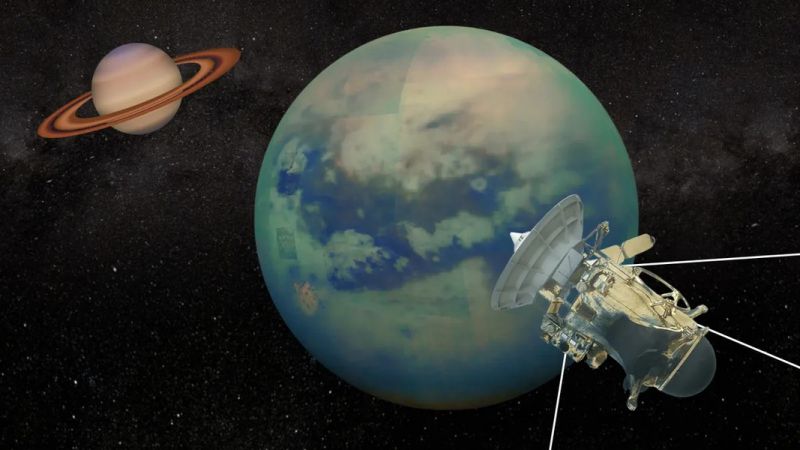
Planetary Picture of the Day
Week of March 17, 2025
From Earth to Mars to Jupiter and even to a distant galaxy, we present more wonders of the universe. Plus, a time-lapse of this month's total lunar eclipse.
Monday, 17 March 2025

Emerald Isle
Happy St. Patrick's Day! On August 7, 2003, the Aqua MODIS instrument acquired this image of Ireland on the first day this summer that most of the island wasn't completely obscured by cloud cover. Ireland is called the Emerald Isle for a good reason. It is draped in vibrant shades of green amidst the blue Atlantic Ocean and the Celtic (south) and Irish (east) Seas. Faint ribbons of blue-green phytoplankton drift in the waters of the Celtic Sea, just south of Dublin.
Dublin appears as a large grayish-brown spot on the Republic of Ireland's northeastern coast. This large capital city (population 1.12 million) sits on the River Liffey, effectively splitting the city in half. Northern Ireland´s capital city, Belfast, also sits on a river: the River Lagan. This city, though its population is only a fifth of the size of Dublin's, is also clearly visible in the image as a grayish-brown spot on the coast of the Irish Sea.
Tuesday, 18 March 2025

On Top of Jezero
NASA’s Perseverance Mars rover has crested the top of Jezero Crater’s rim at a location the science team calls “Lookout Hill” and is rolling toward its first science stop after the months-long climb. The rover made the ascent to explore a region of Mars unlike anywhere it has investigated before. This image was taken with the right-front navigation camera on 10 December 2024, facing west.
Wednesday, 19 March 2025

Jupiter's Jet N7
As NASA's Juno spacecraft flew low over Jupiter’s cloud tops in March 2023, its JunoCam instrument captured this view of bands of high-altitude haze forming above cyclones in an area known as Jet N7.
Thursday, 20 March 2025

Acknowledgment: Davide De Martin and Robert Gendler
M66
Hubble has snapped a spectacular view of M66, the largest "player" of the Leo Triplet, and a galaxy with an unusual anatomy: it displays asymmetric spiral arms and an apparently displaced core. The peculiar anatomy is most likely caused by the gravitational pull of the other two members of the trio.
The unusual spiral galaxy Messier 66 is located at a distance of about 35 million light-years in the constellation of Leo. Together with Messier 65 and NGC 3628, Messier 66 is a member of the Leo Triplet, a trio of interacting spiral galaxies, part of the larger Messier 66 group. Messier 66 wins in size over its fellow triplets — about 100,000 light-years across.
This is a composite of images obtained through the following filters: 814W (near infrared), 555W (green), and H-alpha (showing the glowing of the hydrogen gas). They have been combined so to represent the real colors of the galaxy.
Friday, 21 March 2025

Blood Moon Lunar Eclipse
The phases of the lunar eclipse are visible in this time-lapse image of the Moon above the Space Environments Complex at NASA’s Glenn Research Center at NASA’s Neil Armstrong Test Facility in Sandusky, OH, on March 14, 2025.
Toward the middle of the Moon’s track through the sky, it appears red – this is the Blood Moon. One meaning of a “Blood Moon” is based on its red glow. This blood moon occurs during a total lunar eclipse. During a total lunar eclipse, the Earth lines up between the Moon and the Sun, hiding the Moon from sunlight. When this happens, the only light that reaches the Moon’s surface is from the edges of the Earth’s atmosphere. The air molecules from Earth’s atmosphere scatter out most of the blue light. The remaining light reflects onto the Moon’s surface with a red glow, making the Moon appear red in the night sky.





